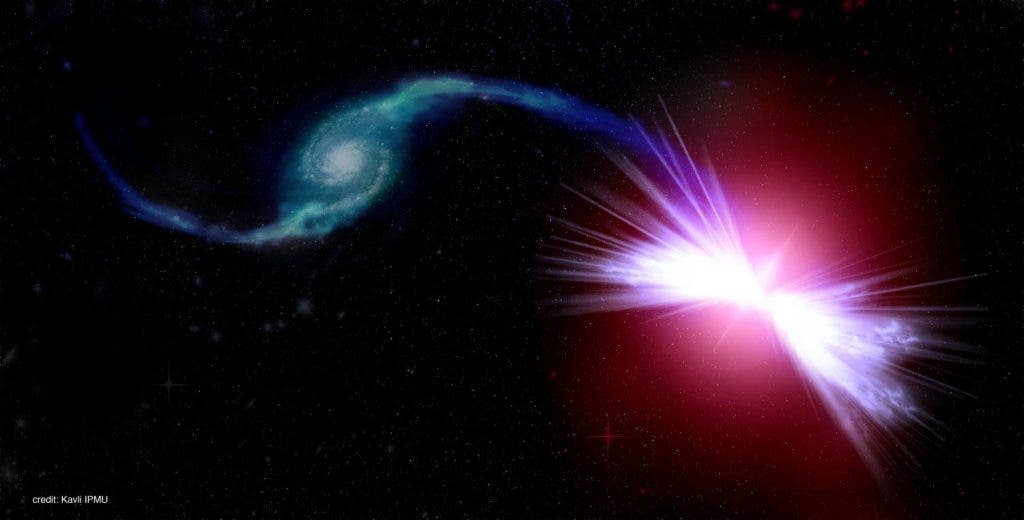Some galaxies are very active and constantly produce new stars, yet astronomers have been perplexed by graveyard galaxies which seem to lack stellar formation abilities even though all the raw materials like gas and dust are there. A striking model produced thanks to the SDSS-IV MaNGA galaxy survey may hold the answer. The analysis suggests some supermassive black holes, which lie at the heart of virtually any galaxy, turn their host galaxies into “red geysers” that suppress star formation.

New stars are born in dense clouds of dust and gas, but only in extremely cold regions with temperatures of about 10 to 20 Kelvin, just above absolute zero. At these temperatures, gases become molecular meaning that atoms bind together. The deep cold also causes the gas to clump to high densities. When the density reaches a certain point, stars form.
Dr Michele Cappellari, from the Department of Physics at Oxford University, likens this process to how drops of rain condense from water vapor.
“[…] in both cases one needs the gas to cool down, for condensation to occur. But we could not understand what was preventing this cooling from happening in many galaxies. But when we modelled the motion of the gas in the red geysers, we found that the gas was being pushed away from the galaxy centre, and escaping the galaxy gravitational pull.”
Cappellari and colleagues suggest that low-energy supermassive black holes drive intense interstellar winds. These winds heat the galaxy’s regions preventing stars from reaching their “hatchery” optimal temperature.
“Stars form from the gas, but in many galaxies stars were found not to form despite an abundance of gas. It was like having deserts in densely clouded regions. We knew quiescent galaxies needed some way to suppress star formation, and now we think the red geysers phenomenon may represent how typical quiescent galaxies maintain their quiescence,” said Lead author Dr Edmond Cheung, from the University of Tokyo’s Kavli Institute for the Physics and Mathematics of the Universe.
In their paper, the researchers explain their model using a distant galaxy called Akira as an example. They describe how the supermassive black hole at the heart of Akira is driving the wind’s mechanism by sucking gas from a neighboring galaxy called Tetsuo. This process heats the ambient gas inside Akira, which in turn suppresses star formation.
The model published in Nature is not the final word, but more observations might confirm a general trend. This would not have been possible were it not for the MaNGA survey, the largest of its kind, which is peering through the inner workings of a mindboggling 10,000 galaxies.
Was this helpful?



